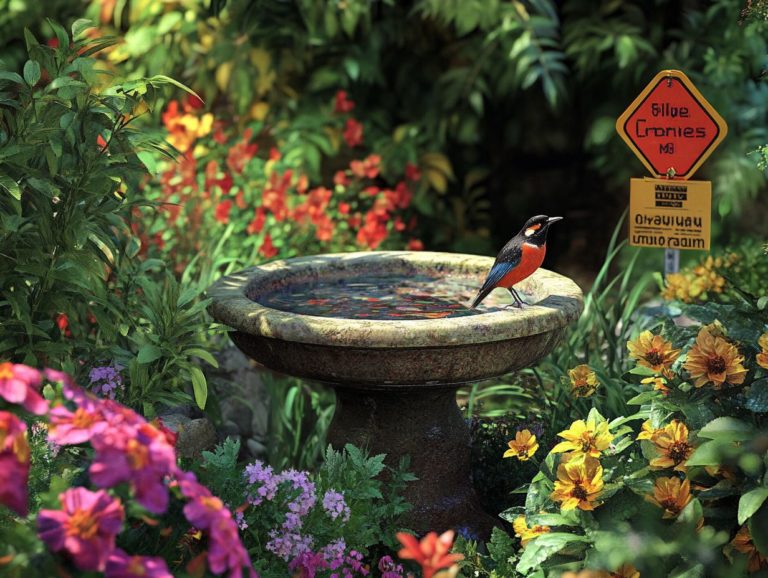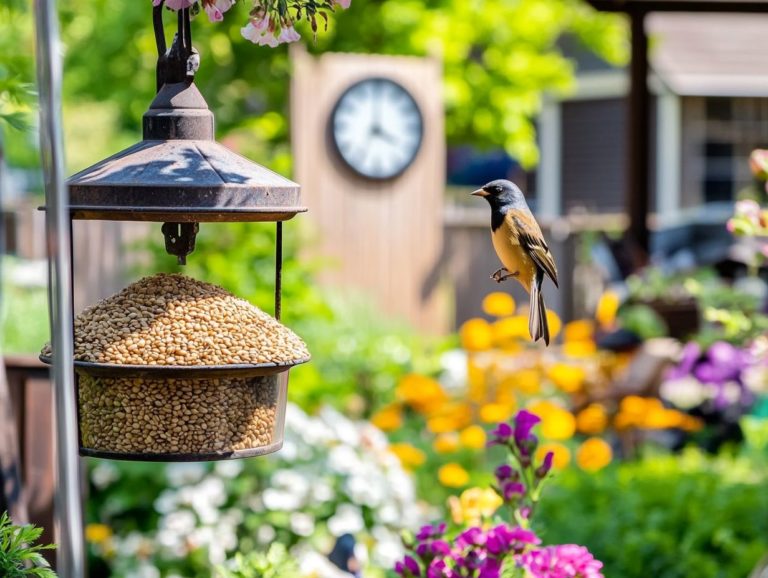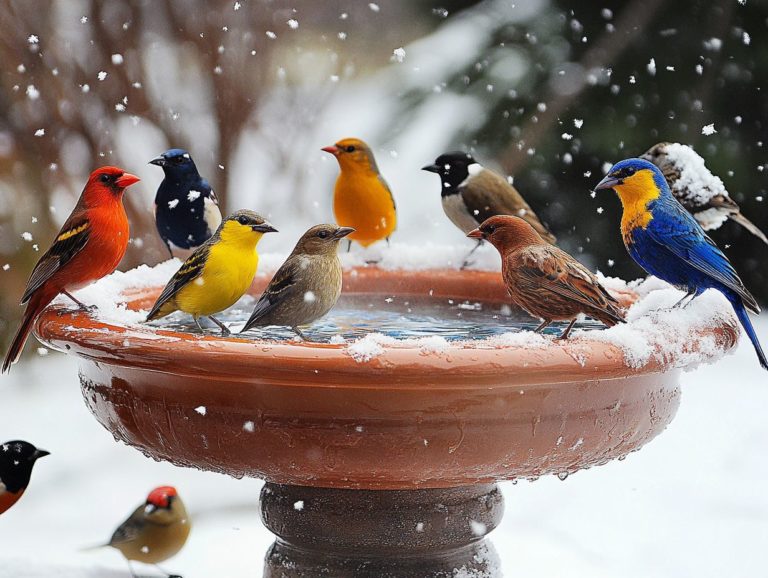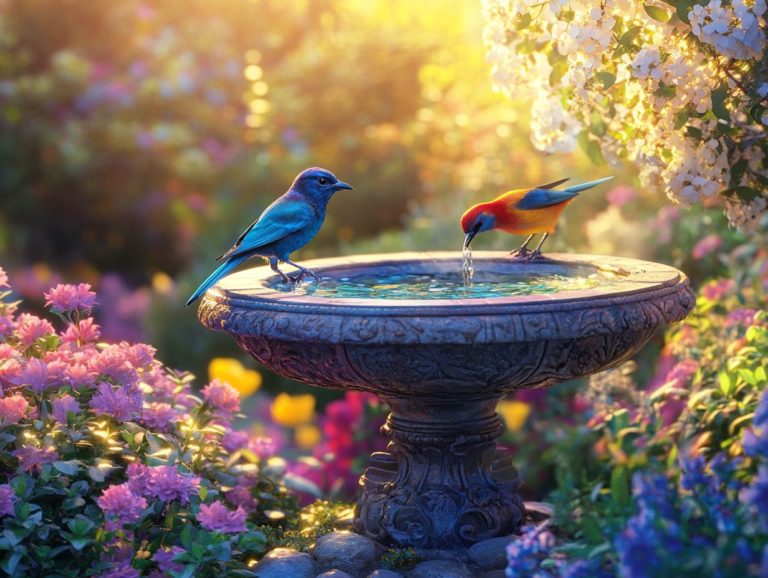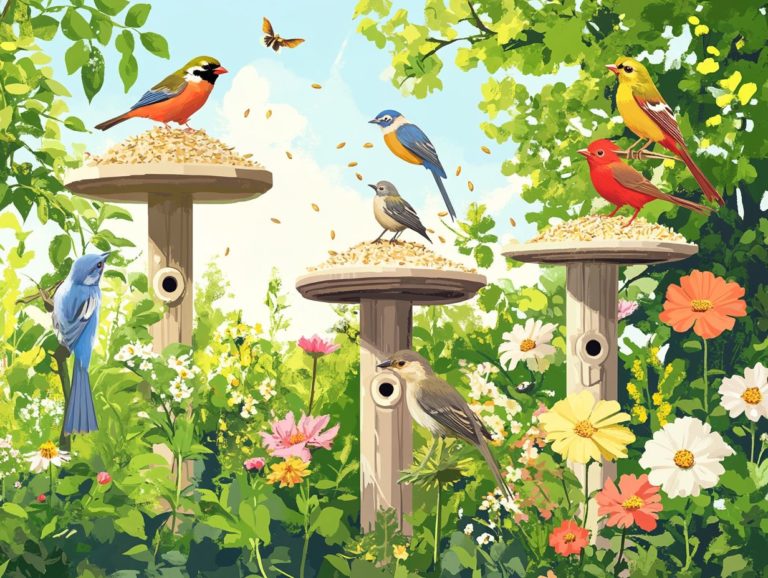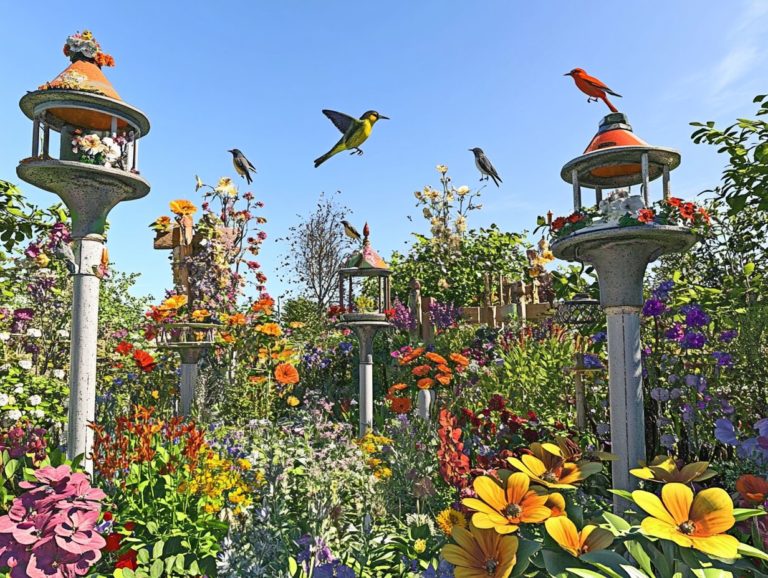Essential Tools for Bird Feeder Setup
Setting up a bird feeder can truly transform your backyard into a vibrant sanctuary, alive with the flutter of wings and the songs of your feathered friends. This provides an excellent opportunity to attract birds.
From selecting the ideal design to finding that perfect location, there s much to consider when you want to attract these delightful visitors. This guide will walk you through the various types of bird feeders available, outline the essential tools you’ll need, and provide step-by-step instructions for a successful setup.
It will also delve into the maintenance and cleaning of your feeder, ensuring it remains an inviting haven for birds throughout the year.
Embrace the experience and discover the joy of birdwatching right from the comfort of your home!
Contents
- Key Takeaways:
- Types of Bird Feeders
- Choosing the Right Location
- Essential Tools for Bird Feeder Setup
- Step-by-Step Guide to Setting Up a Bird Feeder
- Instructions and Tips
- Maintenance and Cleaning
- Frequently Asked Questions
- What are the essential tools needed for setting up a bird feeder?
- Do I need any specialized tools for setting up a bird feeder?
- Can I use any type of screwdriver for setting up a bird feeder?
- Why do I need a level for setting up a bird feeder?
- Do I need to purchase a ladder specifically for setting up a bird feeder?
- Do I need previous experience or skills to set up a bird feeder?
Key Takeaways:
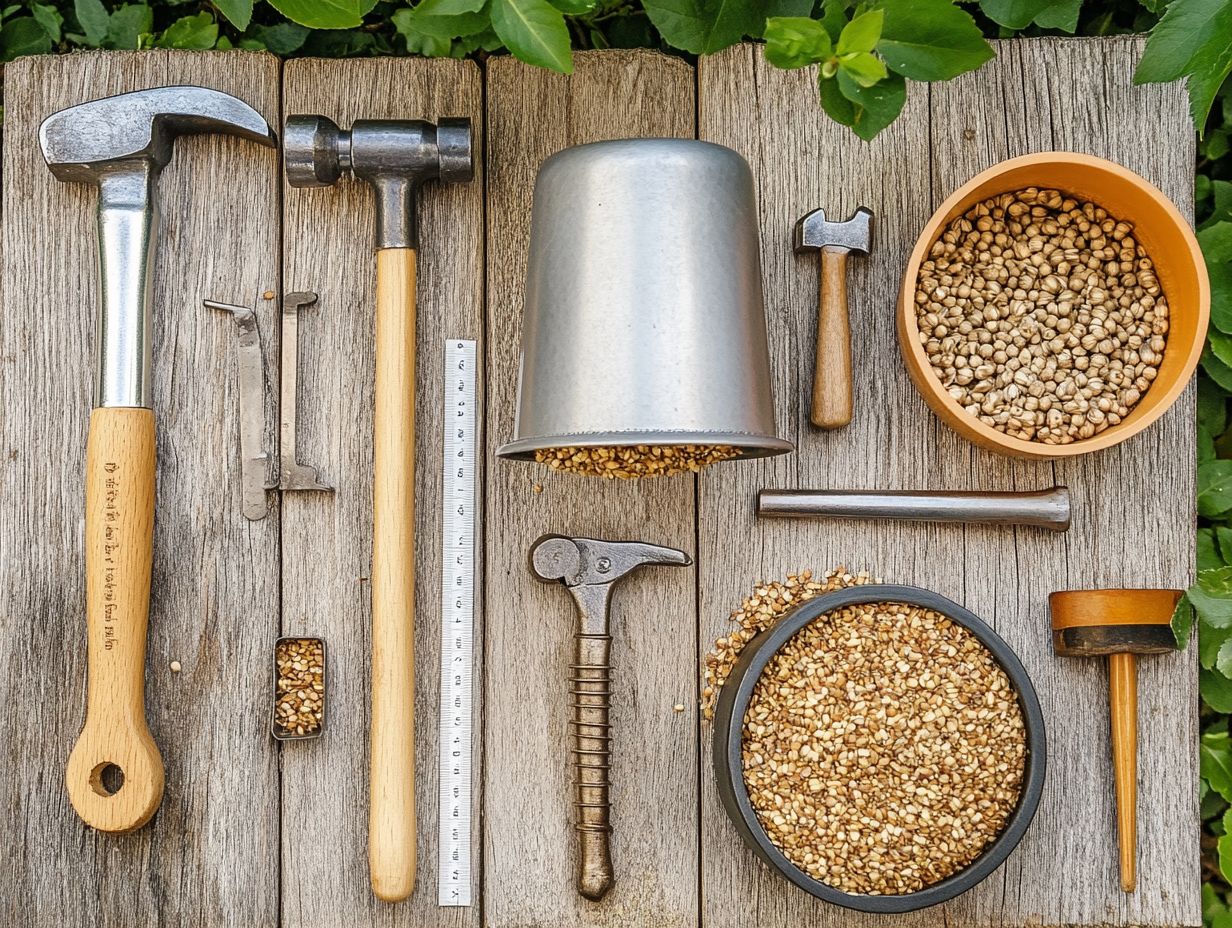
- Investing in a bird feeder can bring joy and beauty to your backyard while providing food for local birds.
- Consider the location and the type of feeder that best suits your needs and the needs of the birds in your area.
- Ensure you have the necessary tools such as a feeder, seeds (like black oil sunflower seed), and a sturdy post or hook before setting up your bird feeder. Regular cleaning and maintenance will also keep your feeder in good condition.
Why Set Up a Bird Feeder?
Setting up a bird feeder is a wonderful opportunity for you to engage with nature, support bird populations, and indulge in the therapeutic benefits of birdwatching. By providing a steady source of food, you can attract a delightful variety of species, including Chickadees, Hummingbirds, and Mourning Doves, all while fostering a deeper connection with the environment.
Bird feeding supports local birds and enhances your mental well-being, allowing you to unwind and reconnect with the natural world.
This simple act has a positive ripple effect on local ecosystems, ensuring that birds have the resources they need, especially during harsh weather or breeding seasons. By attracting an array of birds, such as finches and woodpeckers, you are indirectly contributing to bird conservation efforts, providing habitats for species that may be on the decline.
The joy of observing these feathered visitors can alleviate stress and anxiety, offering you a peaceful retreat from the hustle and bustle of daily life. With every chirp and flutter at the feeder, you cultivate a newfound appreciation for wildlife, creating a fulfilling experience that deepens your connection to nature.
Types of Bird Feeders
Regarding bird feeding, grasping the variety of bird feeders available is crucial for enhancing your backyard experience. You have a range of options, from platform feeders that welcome multiple birds simultaneously to tube feeders tailored for smaller species such as Carolina Chickadees and Ruby-crowned Kinglets.
Each type of feeder serves a distinct purpose, allowing you to attract different bird species while keeping pesky visitors like squirrels and raccoons at bay.
Comparing Different Designs
When comparing different bird feeder designs, you’ll find distinct advantages and disadvantages that can significantly shape your bird feeding experience. For instance, platform feeders offer versatility and can accommodate a variety of species, while tube feeders can limit access for larger birds and squirrels, ensuring that smaller visitors like Ruby-crowned Kinglets get their fair share of food.
If you re feeling creative, homemade bird feeders provide customizable options that can be tailored to your unique backyard environment.
These varied designs not only enhance the diversity of avian visitors but also help in managing unwanted pests. Platform feeders, often celebrated for their openness, can attract ground-feeding birds like Cardinals, but they also tend to invite unwelcome guests such as raccoons. Conversely, tube feeders, which securely hold seeds in a tubular shape, can effectively deter pesky squirrels and larger birds, allowing delicate eaters to enjoy their meals without interruption.
If you’re a DIY enthusiast (Do It Yourself), crafting your own feeders lets you create specific attractants suitable for local bird populations, such as nectar for hummingbirds, specialized seed mixes for finches, or even peanut butter and pine cones for a homemade bird feeder.
By weighing these considerations, you can make informed choices that align with your aesthetic preferences and ecological goals.
Start setting up your bird feeder today and watch your backyard come to life!
Choosing the Right Location
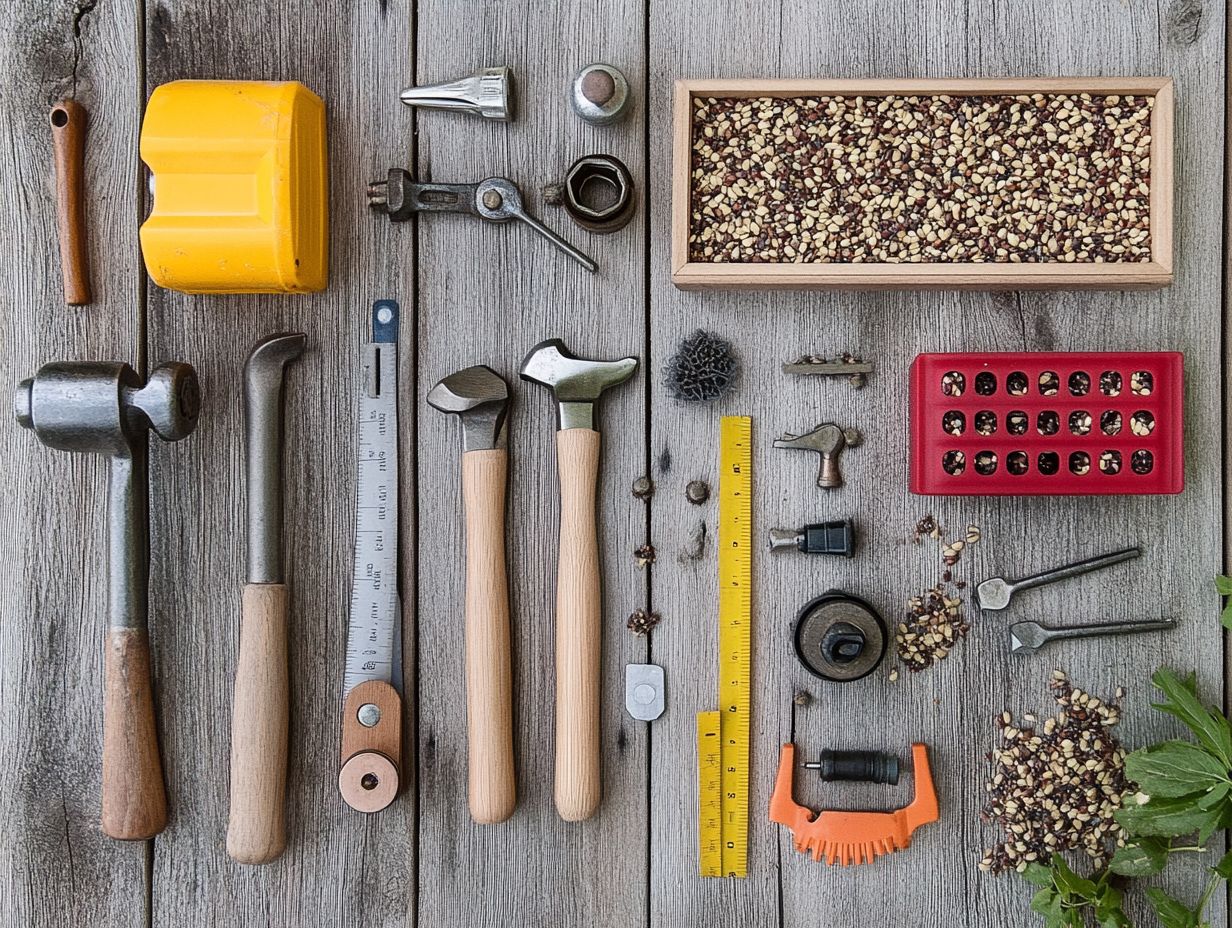
Selecting the perfect spot for your bird feeder is essential for attracting a vibrant variety of birds while keeping them safe from unwanted animals like roaming cats. Placing the feeder where you can easily see it from your home enhances your birdwatching experience, allowing you to fully appreciate the beauty of your feathered guests.
Factors to Consider
Several factors are essential in determining the effectiveness of your bird feeder setup, especially when it comes to attracting birds to your backyard. Key considerations include the types of seeds you choose, like black oil sunflower seeds, and the feeder design that caters to the specific feeding preferences of local species.
It s also important to understand how certain feeders resist pests, ensuring your feathered friends can enjoy their meals undisturbed.
Opting for a variety of seeds can entice different species, from finches to cardinals, each with their unique dietary needs. For example, nyjer seed is a favorite among goldfinches, while juncos are often drawn to mixed seeds.
The design of your feeder should align with these preferences; tube feeders are great for attracting smaller birds, while platform feeders are perfect for larger varieties.
Incorporating features that deter squirrels and other unwanted animals is vital to minimize competition at the feeder. This not only enhances the feeding experience for birds but also maximizes their visits to your garden. By considering these elements, you can create a welcoming environment that invites a delightful array of bird visitors.
Essential Tools for Bird Feeder Setup
To achieve a successful bird feeder setup, you’ll want to be equipped with some essential tools and equipment that every bird enthusiast should have at the ready. This includes cleaning supplies to keep those feeders in pristine condition, installation tools for a seamless setup, and protective elements like raccoon baffles—devices designed to keep raccoons from reaching your bird feeder. Understanding bird feeder preferences can also help you attract the right visitors while keeping unwanted ones at bay.
By prioritizing proper maintenance, you ll ensure that your bird feeders remain in excellent shape, consistently attracting a vibrant population of birds to your yard. So, gear up and get ready to welcome a colorful cast of birds to your backyard!
What You’ll Need
For a seamless bird feeder setup, you ll want to gather a selection of tools and materials that span from basic installation equipment to those charming Do It Yourself (DIY) bird feeder supplies. Essential items include:
- Screwdriver for assembly
- Birdseed (black oil sunflower seeds are best)
- Cleaning tools for maintenance
If crafting piques your interest, consider the materials for a homemade bird feeder to add that personal touch to your backyard. You might find that a drill comes in handy if you re leaning towards a more intricate design, along with screws or nails to secure various components.
Don t overlook the importance of a bird feeder pole or hooks for optimal placement and stability. If you re feeling particularly crafty, pine cones, peanut butter, and birdseed can easily be transformed into delightful feeders that nature will love.
Keeping your feeding area clean is key; regular maintenance prevents disease among local bird populations. Using solutions like diluted vinegar or mild soap for sanitizing will ensure a safe environment, creating a vibrant wildlife experience in your outdoor space.
Step-by-Step Guide to Setting Up a Bird Feeder
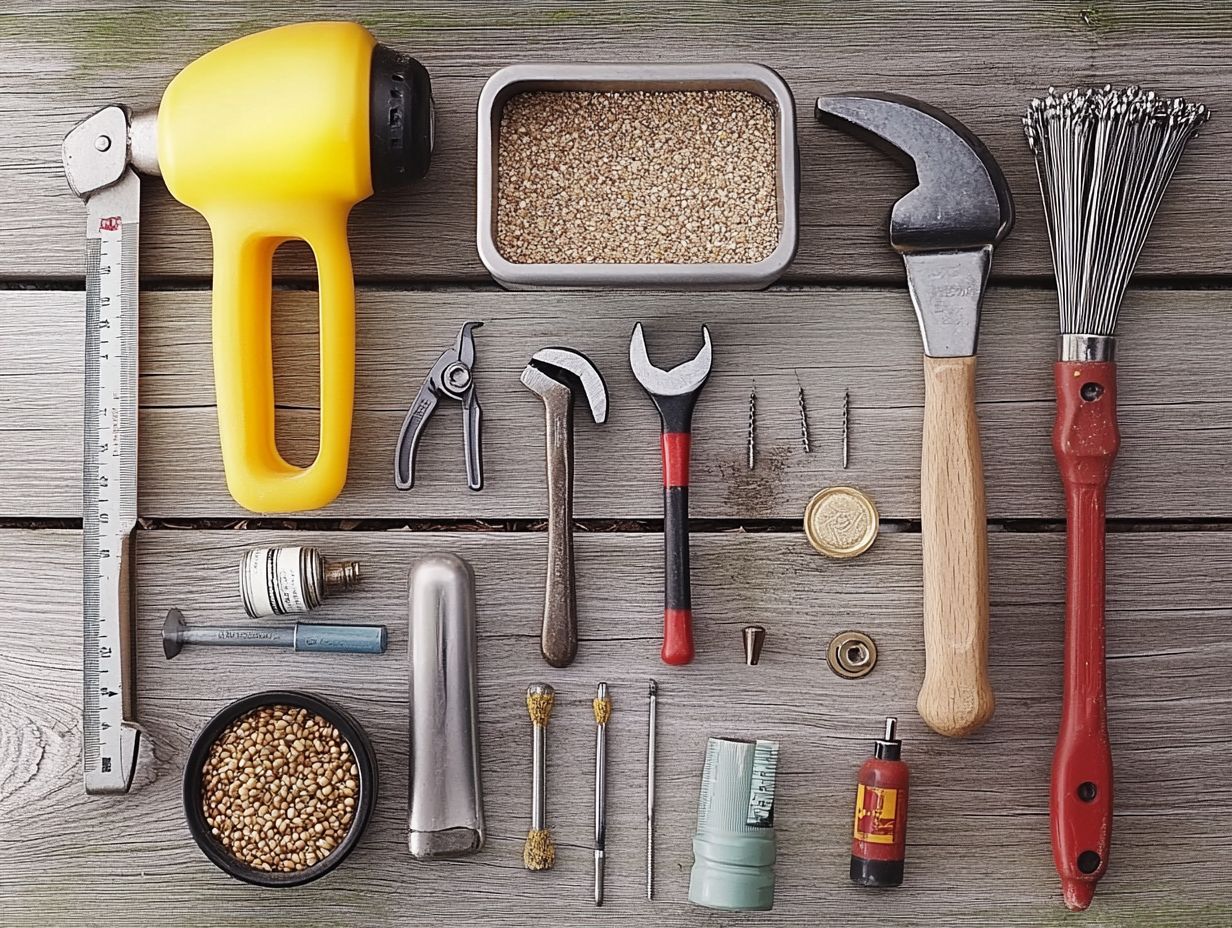
Setting up a bird feeder can truly be a delightful endeavor, and following a methodical guide will ensure a seamless experience from installation to upkeep. Don t wait too long to set up your feeder birds are waiting to visit you!
Start by selecting the ideal location and the appropriate type of feeder that suits your needs. Once that s settled, proceed with assembly, adhering closely to the manufacturer s instructions for best results.
Remember to regularly clean your feeders; this not only keeps them inviting for feathered friends but also ensures that your feeding setup remains effective and aesthetically pleasing.
Instructions and Tips
To ensure your bird feeder setup is effective, following specific instructions can elevate your bird feeding experience. Begin by positioning your feeder in the best spot one that attracts birds while also considering their safety from predators.
Regular maintenance is essential. Clean your feeders frequently to prevent mold and spoilage. This ensures your feathered visitors enjoy a safe and welcoming environment.
Use a mixture of seeds tailored to the local bird species. This diversity can draw a delightful array of feathered friends to your yard. When cleaning, use a gentle soap and water solution. Make it a routine practice ideally every two weeks to scrub away debris. Consistent upkeep keeps the feeding station hygienic and encourages birds to return.
Incorporating a water source nearby can make your feeders even more inviting for birds in search of nourishment and hydration.
Maintenance and Cleaning
Regularly cleaning bird feeders is crucial for nurturing a healthy feeding environment. Consistently check and replenish seed like black oil sunflower seeds and ensure feeders remain free from debris and mold. This not only provides a nutritious meal but also entices a more diverse array of species to your backyard.
Prioritizing cleanliness helps prevent diseases that could threaten both individual birds and their populations.
Keeping Your Bird Feeder in Good Condition
To nurture a vibrant bird population in your yard, keep your bird feeder in top-notch condition. Regularly cleaning your feeders prevents the buildup of bacteria and mold, ensuring they remain inviting and safe for feathered friends.
Implement effective cleaning techniques, such as using a diluted bleach solution or a vinegar mix to eliminate harmful contaminants. A soft brush or sponge will help tackle hard-to-reach spots. Consider investing in feeder designs that are easy to disassemble; this will streamline your cleaning process.
Proper maintenance fosters healthier feeding conditions and plays a pivotal role in attracting a variety of bird species. Cleanliness ensures that birds view your feeder as a reliable food source. A well-kept feeder can significantly influence the frequency and diversity of species that visit, enhancing your backyard experience.
Frequently Asked Questions
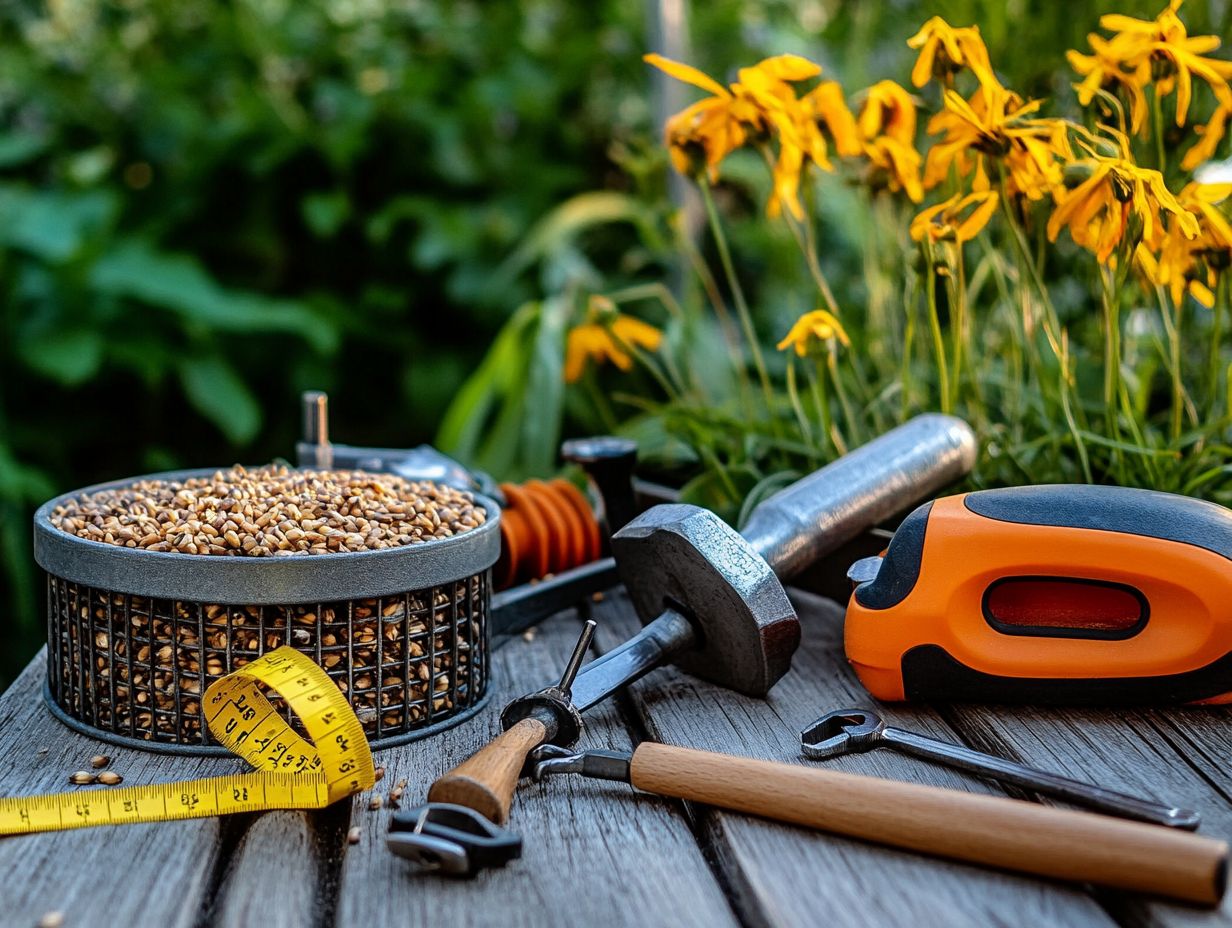
What are the essential tools needed for setting up a bird feeder?
The essential tools for bird feeder setup include a screwdriver, pliers, wire cutters, level, measuring tape, and a sturdy ladder, all of which are important for understanding how to set up a bird feeder station.
Do I need any specialized tools for setting up a bird feeder?
No, you do not need specialized tools. The tools mentioned above are commonly found in most households and are sufficient for setting up a bird feeder.
Can I use any type of screwdriver for setting up a bird feeder?
Yes, you can use either a Phillips or flathead screwdriver, depending on the type of screws in your bird feeder. It is recommended to have both types on hand to ensure you have the right tool for the job.
Why do I need a level for setting up a bird feeder?
A level ensures that your bird feeder is positioned correctly and securely. It also helps prevent the feeder from tipping over and spilling birdseed.
Do I need to purchase a ladder specifically for setting up a bird feeder?
No, any sturdy ladder tall enough to reach your desired location will work. However, always use caution and follow ladder safety guidelines when setting up your feeder.
Do I need previous experience or skills to set up a bird feeder?
No, setting up a bird feeder is a simple task that does not require any specific skills or experience. As long as you have the essential tools and follow the instructions for your specific bird feeder, you should have no trouble setting it up successfully.

